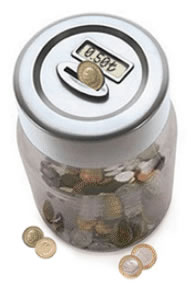
What are the benefits of SuperPrep?
Save time
Ready for further treatment

Superprep method means you can remove one or more old floor coverings, and the floor is flat and clean. Immediately after grinding, you can start a new floor covering or perhaps simply continue grinding and polishing the concrete into an Superfloor. More traditional methods such as scarifyin or blasting work vertically against the floor and are also very effective at removing coverings. The disadvantage is that as the covering is removed, the underlying floor is damaged so that self-levelling compound or a great deal of extra floor covering is required. Using self-levelling compound is time-consuming and a lot of subsequent grinding is often required
On pages 10 - 11 'Revolutionising the construction process', you can read more about how you can shorten the construction process for freshly-cast concrete slabs thanks to grinding.
- Quicker and smoother end results
- Grinds close to edges and corners
- Reduces need for self-levelling compound
- Shorter drying times
Save money
Less material consumption

Grinding is gentle on the floor, unlike other methods, where both the floor and the old floor covering are scraped away. Following scarifying or shot blasting, the floor is always uneven and requires a lot of extra covering in order to fill inthe irregularities in the floor (see page 12 - 14).
In addition, an uneven surface needs to be filled up to the highest point of the floor. With grinding, you can save up to 40% of floormaterial costs, such as self-levelling compound andextra floor covering.
As around 17 kg of dry self-levelling compound i s requi red per m ² to achieve 10 mm , unnecessarytransport and set-up time is avoided
- 40% less material consumption
- Lower transport costs
- Lower manpower costs

Consider the environment
Save energy

You can benefit financially from using less covering, the environment benefits, and at the same time less material is consumed and transport is reduced. In addition, huge amounts of energy are saved, as 50 kWh/m² is required to manufacture 3 mm, or 1 kg, of self-levelling epoxy. Epoxy is a thermosetting plastic which then goes to landfill or is incinerated.
- Less material consumption, less environmental impact
- Fewer transports, lighter carbon footprint
- 50 kWh to lay 1 m² of epox0y
- Profit for you, benefit for the environment, win-win
Improve your working environment
Smarter working method

If you use HTC Superprep™ as a method, other activities can continue in the area without any problems. This provides huge benefits for a business owner or an industry that can continue with its activities. The sound level from grinding is only 90 dB next to the machine, which means that it is significantly lower than shot blasting or scarifying, for instance. And with the right vacuum cleaner and pre-separator, the work is virtually dust-free. The design of the grinding machines (page 8) means that the operator can work with the machines straight forward without any lateral forces. As the machines work along the floor and not downwards from above, most of the vibrations are avoided. The vibrations are therefore well below the specifie maximum. The average is 0.6 m/s² for an TM 650.
- Superprep can be used while activities continue in the area
- Virtually dust-free
- Few vibrations, only 0.6 m/s²
- Using grinding machines, you reach no more than 90 dB